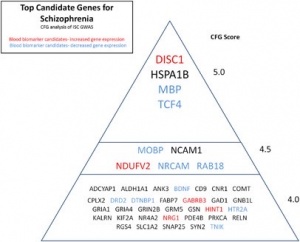I think it’s one thing to be health condition but, it’s another to be able to get the help that you need. I grew up in an area that used to see mental illness as evil spirits, bad karma, family misfortunes. This not only caused stigmatization and discrimination against mental health patients but it also prevented the patients of the disease to be able to get the adequate help that they need.

In other words, Schizophrenic patients are prone to human rights violations in society and even in mental health facilities (WHO,2019).
Mental illnesses that attack the central nervous system such as Schizophrenia are mostly genetic and/or can be triggered by environmental stressors such as drug abuse, domestic abuse, other neurological illness, etc.
Schizophrenia is a psychosis largely characterized by cognitive, emotional, physical distortions. The actual cause of it is not fully known but hypotheses have been made of the possible reason behind the gradual deterioration and based on the symptoms. There are cognitive, positive, and negative symptoms. Positive include delusions, negative include lack of emotional expression, and cognitive symptoms include the inability to make decisions (PsychCentral, 2021).
Considering that a large probability of proneness to schizophrenia is linked to genetic and early development, it is important to understand the role of the Wnt signaling pathway in this cascade
The Wnt signaling pathway
It is involved in cell maintenance and renewal. Basically, Wnt ligands bind their receptor complex which causes the recruitment of APC to the membrane, facilitating the dissociation of the destruction complex. This results in decreased phosphorylation of β-catenin. When the destruction complex is dissociated, β-catenin is then able to get into the nucleus and influence the targeted genes.
In a study on the “Convergent functional genomics of schizphrenia“, the targeted genes, in this case, researched in different groups included African Americans and European Americans, and were graded and ranked out of 5points as seen in the illustration below

The top genes targeted include DISC 1 (protects synaptic plasticity), and decreased expression of MBP ( involved in protein formation for myelin formation). Both these genes for example allow responsiveness to stimuli and learning which is seen to be hindered in schizophrenic patients.
The question at this point is how can we better deal with it, in terms of prevention, treatment and awareness. Given that it can be heredited, to what extent to we start treating it? Do we wait for symptoms to show once the disease has progressed? Can technology and gene therapy be the future for mitigating schizophrenia gene vulnerability? And how can Schizophrenic patients get affordable help regardless of their economic standpoints?
These are the big questions to think about in my opinion in order to progress more in the treatment of schizophrenia for long-term.
References:
- John M. Grohol, Psy.D. “Schizophrenia Symptoms: Negative, Positive, and More.” Psych Central, Psych Central, 4 Feb. 2021, https://psychcentral.com/schizophrenia/schizophrenia-symptoms?utm_account=&utm_medium=cpc&utm_semcampaign=&utm_adgroup=&utm_match=b&utm_query=&utm_term=&utm_content=540967374863&utm_source=google&marinid=s&gclid=CjwKCAjwhuCKBhADEiwA1HegOXz527pV8bxnc59QXv7zMOppnMTflRYTKeTiTg13jh_FpCC06OhxQRoCS3UQAvD_BwE.
- “Schizophrenia.” World Health Organization, World Health Organization, https://www.who.int/news-room/fact-sheets/detail/schizophrenia.
- Ayalew, M, et al. “Convergent Functional Genomics of Schizophrenia: From Comprehensive Understanding to Genetic Risk Prediction.” Nature News, Nature Publishing Group, 15 May 2012, https://www.nature.com/articles/mp201237.